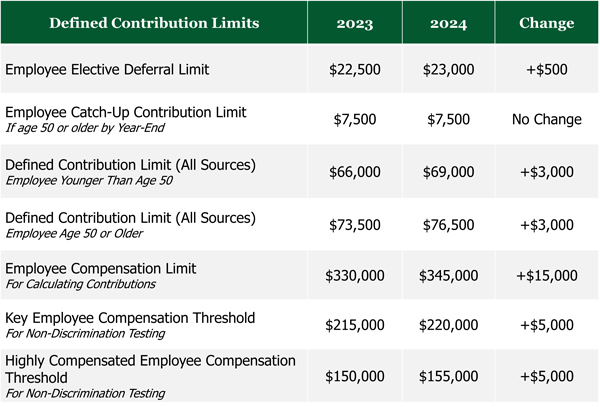As we head for the year’s home stretch, there is a host of planning items you should consider as well as some general information you should be aware of for the coming year.
PLANNING ITEMS
Wages and Payroll
Depending on the benefits that are offered through your employer, you may have access to an FSA, HSA, or both. Below are items to be aware of with each, be sure to check your benefits or consult your employer or your benefits handbook to determine what you have available.
Flexible Spending Account (“FSA”)
Look to use up your “FSA” funds before year-end. Depending on the plan, employers allow a carryover from 2023 to 2024 of “FSA” funds of up to $610. Some plans also include a 2 ½ month “grace period” that extends the balance of your “FSA” into 2024. Employers are not required to offer these extensions. Please check with your employer to determine if your “FSA” includes either of these benefits.
Goal – To use and not lose the money you contributed to your “FSA.”
Health Savings Account (“HSA”)
Maximize your pre-tax “HSA” contributions. $7,750 is the maximum you can contribute to your “HSA” in 2023 for family coverage. $3,850 is the maximum amount you can contribute for self-only coverage.
Goal – To maximize pre-tax savings and save for future healthcare needs. You have until 4/15/2024 to make these contributions effective for the 2023 tax year if you are self-funding. If your HSA is funded via your employer, funding is typically limited to the calendar year. The statutory deadline for contributing to your HSA is through the un-extended deadline for filing your income tax return. Normally, that’s April 15th after the close of the tax year.
There is also a $1,000 catch-up contribution for individuals aged 55 or older.
401(k) Contributions
Maximize contributions to 401(k) plans of $22,500 and $30,000 if age 50 and older.
Goal – To maximize pre-tax savings and save for retirement.
Also, the IRS just announced the 2024 contribution limits for qualified retirement plans. The employee contribution limit rises from $22,500 to $23,000. The catch-up contribution for individuals 50 or older stays the same as this past year at $7,500.
The defined contribution limit, which is the combined total between employee and employer contributions climbs to $69,000 which is an increase of $3,000. The employee compensation limit which restricts the amount of compensation eligible for calculating contributions is going up by $15,000 to $345,000.




